In the groovy 1970s, a housing revolution took place that transformed the American dream. Picture this: affordable homes on wheels, offering freedom and flexibility to homeowners across the nation. In this article Best 1970’s Mobile Home For Sale we will cover off everything you need to know about a 1970’s mobile home.
Best 1970s Mobile Home For Sale
The rise of mobile homes in the 1970s brought about a radical shift in housing options, capturing the hearts of many Americans seeking an alternative lifestyle.
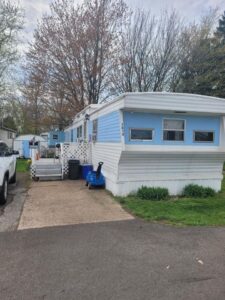
During this swinging decade, mobile homes became all the rage as people embraced their affordability and mobility. These vibrant abodes offered a solution for those looking to own a home without breaking the bank. With their unique charm and practicality, they quickly became a popular choice for individuals and families alike.
The 1970s were an exciting time when these movable dwellings boomed in popularity. Let’s dive into this fascinating era of housing innovation and discover more about these iconic symbols of freedom and individuality.
So, buckle up as we embark on a journey back to the swinging ’70s when mobile homes ruled as trendy havens for homeowners seeking an adventurous way of life!
Characteristics and Features of 1970s Mobile Homes
Spacious Interiors with Open Floor Plans
1970s mobile homes were known for their spacious interiors and open floor plans, providing a sense of freedom and flexibility. Unlike traditional homes with segmented rooms, these mobile homes embraced the concept of an open layout. The absence of walls between the living room, kitchen, and dining area created a seamless flow, making the space feel larger and more inviting.
Inside these mobile homes, you would often find ample room to move around comfortably. The open floor plan allowed for easy navigation between different areas without any obstructions. This design feature also facilitated better communication and interaction among family members or guests, as everyone could be part of conversations happening in various parts of the home.
Vinyl or Wood Paneling as Interior Wall Coverings
A distinct characteristic of 1970s mobile homes was their interior wall coverings made from either vinyl or wood paneling. These materials not only provided insulation but also added a touch of warmth to the overall aesthetic. Vinyl panels were popular due to their affordability and ease of maintenance. They came in various colors and patterns, allowing homeowners to customize their interiors according to personal preferences.
Wood paneling, on the other hand, exuded a rustic charm that many people found appealing during this era. It gave mobile homes a cozy atmosphere reminiscent of traditional houses while still retaining the convenience and mobility associated with mobile living. Whether it was light-colored oak panels or darker walnut ones, wood paneling added character to these homes’ interiors.
Built-in Furniture and Appliances
Another notable feature commonly found in 1970s mobile homes was built-in furniture and appliances. To maximize space utilization within these compact dwellings, manufacturers integrated essential items directly into the structure. This approach eliminated the need for separate purchases or additional storage solutions.
Built-in furniture included features like sofas with hidden storage compartments underneath or beds that folded into the wall during the day, creating more floor space. These clever designs allowed residents to make the most of their limited square footage without sacrificing comfort or functionality.
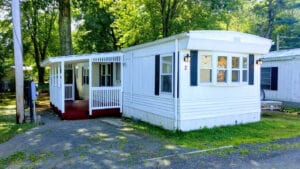
Similarly, built-in appliances such as stoves, refrigerators, and ovens were seamlessly integrated into the kitchen area. This not only saved space but also ensured a cohesive look throughout the mobile home. Everything was within arm’s reach, making daily tasks more convenient and efficient.
Affordability and Accessibility of 1970s Mobile Homes
Compared to traditional houses, 1970s mobile homes were more affordable for buyers. These homes provided an accessible option for individuals looking to own property. Financing options made it easier for people to purchase a 1970s mobile home.
Mobile homes from the 1970s offered an attractive alternative to traditional houses due to their affordability. In a time when housing prices were steadily rising, these mobile homes provided a cost-effective solution for those seeking homeownership. With lower price tags compared to conventional houses, they allowed individuals with limited budgets to fulfill their dream of owning property.
The affordability of 1970s mobile homes was not only appealing but also highly accessible. These homes were designed with the needs of everyday people in mind, allowing them to enter the housing market without breaking the bank. The accessibility extended beyond just financial considerations; it also encompassed factors such as location and convenience. Mobile home parks sprung up across the country, providing affordable plots where individuals could park their mobile homes and enjoy a sense of community.
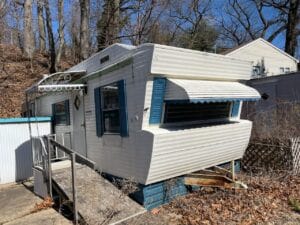
Financing options played a crucial role in making 1970s mobile homes accessible to a wider range of buyers. Traditional mortgages were often challenging for many potential homeowners due to strict eligibility criteria and higher down payment requirements. However, financing options tailored specifically for mobile home purchases emerged during this era, making it easier for people from various financial backgrounds to obtain loans.
Best 1970s Mobile Home For Sale
One popular manufacturer during this time was Oakwood Homes, which specialized in producing high-quality mobile homes at affordable prices. Oakwood Homes became known for its commitment to crafting durable and comfortable dwellings that would stand the test of time while remaining within reach of budget-conscious consumers.
In addition to affordability and accessibility, there were other advantages associated with purchasing a 1970s mobile home. These dwellings often featured modern amenities such as central heating and air conditioning systems, fully equipped kitchens, and spacious living areas. They provided a comfortable and convenient living environment at a fraction of the cost of traditional houses.
Furthermore, 1970s mobile homes offered flexibility in terms of relocation. Unlike permanent structures, these homes could be easily transported to different locations, allowing homeowners to change their surroundings as desired. This mobility aspect appealed to individuals who sought adventure or had job requirements that necessitated frequent moves.
Renovation and Remodeling Ideas for 1970s Mobile Homes
Renovating and remodeling a 1970s mobile home can bring new life to your living space. With a few updates and changes, you can transform the look and feel of your home while maintaining its unique charm. Here are some ideas to get you started on your mobile home remodel journey.
Updating the Flooring
One of the most effective ways to give a fresh look to a 1970s mobile home is by updating the flooring. Many older mobile homes feature outdated carpeting or linoleum that can make the space feel dull and worn out. Consider replacing these with modern options such as hardwood, laminate, or vinyl plank flooring.
Hardwood: A classic choice that adds warmth and elegance to any room.
Laminate: Affordable and available in various styles, it mimics the appearance of hardwood without the high price tag.
Vinyl Plank: Durable, waterproof, and easy to install, making it ideal for kitchens and bathrooms.
By choosing new flooring materials, you can instantly revitalize your living space and create a more contemporary atmosphere.
Replacing Outdated Fixtures
Another way to enhance the overall aesthetic of your 1970s mobile home is by replacing outdated fixtures throughout the house. Swap out old light fixtures with modern designs that suit your style preferences. Consider installing energy-efficient LED lights to brighten up each room while saving on electricity bills.
In addition to lighting fixtures, upgrading kitchen appliances can also make a significant difference in both functionality and appearance. Stainless steel appliances provide a sleek and timeless look that complements any kitchen design. Don’t forget about bathroom fixtures too; replacing faucets, showerheads, and toilets can give these spaces a much-needed facelift.
Adding Insulation for Energy Efficiency
1970s mobile homes often lack proper insulation, leading to temperature fluctuations inside the house. By adding insulation, you can improve energy efficiency and make your home more comfortable throughout the year. Insulating the walls, floors, and ceilings will help regulate indoor temperatures and reduce heating or cooling costs.
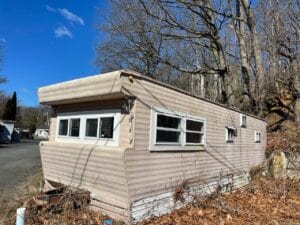
Consider using materials such as fiberglass batts or spray foam insulation for optimal results. These options provide excellent thermal resistance and are relatively easy to install. Adding insulation not only saves you money but also creates a cozy environment inside your mobile home.
With these renovation and remodeling ideas for 1970s mobile homes, you can transform your living space into a modern and inviting haven. Update the flooring, replace outdated fixtures with contemporary ones, and add insulation to enhance energy efficiency. Embrace the unique charm of your mobile home while enjoying the benefits of a refreshed interior.
Common Issues with 1970s Mobile Homes
Moisture Damage
Moisture damage is a frequent problem encountered in 1970s mobile homes. These structures often lack adequate sealing and ventilation systems, making them susceptible to moisture buildup. Without proper ventilation, condensation can accumulate on surfaces, leading to mold growth and wood rot. Over time, this can weaken the structural integrity of the home and pose health risks to its occupants.
To combat moisture damage in a 1970s mobile home, homeowners should consider taking the following steps:
Install or upgrade ventilation systems: Proper airflow is crucial in preventing moisture buildup. Installing exhaust fans in kitchens and bathrooms can help remove excess humidity from these areas.
Seal gaps and cracks: Inspect the exterior of the mobile home for any gaps or cracks that may allow water infiltration. Seal them with appropriate caulking or weatherstripping materials.
Improve insulation: Enhancing insulation levels can help regulate temperature and reduce condensation within the home.
Roof Leaks
Another common issue found in older mobile homes is roof leaks. Over time, exposure to harsh weather conditions can cause wear and tear on the roofing materials, leading to leaks that allow water to seep into the interior of the home.
To address roof leaks effectively:
Identify damaged areas: Inspect the roof for missing shingles, cracked seals around vents or chimneys, or any signs of deterioration.
Repair or replace damaged sections: Depending on the extent of damage, repairs may involve patching small holes or replacing entire sections of roofing material.
Apply protective coatings: Applying a waterproof sealant over the roof’s surface can provide an additional layer of protection against future leaks.
It’s important for homeowners to address roof leaks promptly as they can lead to further structural damage if left unattended.
Plumbing Problems
Plumbing problems are also prevalent in 1970s mobile homes due to aging pipes. Over time, the pipes can corrode, leading to leaks or clogs that affect water flow and drainage.
To tackle plumbing issues effectively:
Inspect the plumbing system: Identify any visible signs of leaks such as damp spots, water stains, or a decrease in water pressure.
Replace worn-out pipes: If aging pipes are the cause of the problem, consider replacing them with more durable materials like PVC or copper.
Clear clogs: Use drain snakes or environmentally friendly drain cleaners to clear any blockages in sinks, toilets, or showers.
Regular maintenance and periodic inspections can help prevent major plumbing issues and ensure proper functioning of the system.
Upgrading the Electrical and Plumbing Systems in 1970s Mobile Homes
Ensuring Safety and Compliance with Modern Standards
Upgrading the electrical system in a 1970s mobile home is crucial to ensure both safety and compliance with modern standards. These older homes often have outdated wiring that may not meet current safety codes, putting residents at risk of electrical hazards such as fires or electrocution.
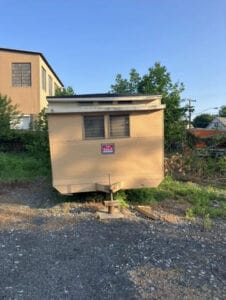
One essential step in upgrading the electrical system is replacing old, worn-out wiring. This can involve rewiring the entire home or focusing on specific areas that require attention. By doing so, homeowners can eliminate potential fire hazards caused by faulty wires and prevent dangerous situations.
Another important aspect of upgrading the electrical system is installing ground fault circuit interrupters (GFCIs). GFCIs are designed to detect any imbalances in electrical currents and immediately shut off power to prevent shocks. Installing these devices throughout the mobile home significantly enhances electrical safety, particularly in areas where water is present, such as bathrooms or kitchens.
Improving Water Flow and Reducing Leaks
In addition to addressing electrical concerns, it’s equally important to upgrade the plumbing system in a 1970s mobile home. Over time, pipes can deteriorate, leading to leaks, reduced water flow, and potential water damage within the structure.
Replacing old plumbing pipes with newer materials not only reduces the risk of leaks but also improves water flow throughout the home. Copper or PEX (cross-linked polyethylene) pipes are commonly used for their durability and resistance to corrosion compared to older galvanized steel or iron pipes.
Furthermore, upgrading fixtures like faucets and showerheads can enhance both aesthetics and functionality while reducing water wastage. Low-flow options are available that conserve water without sacrificing performance.
Enhancing Electrical Safety with GFCIs
As mentioned earlier, installing ground fault circuit interrupters (GFCIs) plays a vital role in enhancing electrical safety within a 1970s mobile home. GFCIs are designed to detect any imbalances in electrical currents and quickly shut off power, preventing potential shocks and electrocution.
To ensure maximum safety, consider installing GFCIs in the following areas:
Bathrooms: Protect against electric shock when using electrical appliances near water sources.
Kitchens: Safeguard against potential hazards caused by water splashing on outlets or appliances.
Outdoor outlets: Provide protection from moisture-related issues that can occur due to exposure to the elements.
By incorporating GFCIs into the electrical system of a 1970s mobile home, homeowners can significantly reduce the risk of electrical accidents and create a safer living environment for themselves and their families.
Enhancing the Curb Appeal of 1970s Mobile Homes
Freshen Up with a New Coat of Paint
One of the easiest and most effective ways to enhance the curb appeal of a 1970s mobile home is by giving it a fresh coat of paint. The exterior color can instantly refresh the look and make the home appear more modern and well-maintained. Consider choosing a color scheme that complements the surroundings, such as earth tones for a natural aesthetic or vibrant hues to make your home stand out.
Landscaping to Create an Inviting Atmosphere
Adding landscaping elements around your mobile home can greatly improve its curb appeal. Consider creating flower beds or planting shrubs along the perimeter to add visual interest and softness to the overall look. Incorporating native plants can also be beneficial as they require less maintenance and are better adapted to local weather conditions.
Upgrade Your Front Porch or Entryway
The front porch or entryway is often the first thing visitors notice when approaching your home. Upgrading this area can create an inviting first impression and significantly enhance curb appeal. Start by evaluating the condition of your porch flooring, railings, and steps. Repair any damages and consider staining or painting them for a refreshed appearance.
To further enhance your front porch, consider these ideas:
Add potted plants or hanging baskets for a touch of greenery.
Install outdoor lighting fixtures to illuminate pathways and highlight architectural features.
Place comfortable seating options like rocking chairs or benches to create an inviting space for relaxation.
Make Use of Social Media Inspiration
When seeking inspiration for enhancing your 1970s mobile home’s curb appeal, social media platforms like Pinterest, Facebook groups, and Instagram can be valuable resources. Join online communities dedicated to mobile homes or renovation projects where you can find before-and-after pictures, tips from fellow homeowners, and creative ideas that suit your taste.
Take That First Step
Improving the curb appeal of a 1970s mobile home doesn’t have to be overwhelming. Taking the first step is often the hardest part, but it can lead to transformative results. Start by assessing your home’s exterior and identifying areas that need attention. Make a list of desired improvements, prioritize them, and create a budget that suits your needs.
Remember, enhancing curb appeal is not only about making your mobile home look visually appealing; it also adds value to your property and creates a welcoming atmosphere for you and your guests. With some creativity, effort, and a little bit of paint, you can transform your 1970s mobile home into an eye-catching space that reflects your style and personality.
So why wait? Roll up your sleeves and get started on enhancing the curb appeal of your beloved 1970s mobile home today!
Conclusion: Best 1970s Mobile Home For Sale
In conclusion, 1970s mobile homes continue to be relevant today due to their unique characteristics and features, affordability, and potential for renovation. These homes offer an accessible housing option that can be customized and upgraded to meet modern needs.
Despite being several decades old, 1970s mobile homes possess certain qualities that make them appealing in the present day. Their compact size and efficient layouts provide a cozy living space while maximizing functionality. The durability of these homes has stood the test of time, making them a reliable choice for those seeking affordable housing options.
The affordability factor is another key reason why 1970s mobile homes are still sought after today. Compared to traditional houses or newer mobile home models, these older units often come with a lower price tag. This makes them an attractive option for individuals or families looking to enter the housing market without breaking the bank.
Moreover, renovating and remodeling a 1970s mobile home allows homeowners to personalize their living space according to their preferences. With some creativity and effort, these homes can be transformed into stylish and comfortable dwellings that suit modern tastes. Upgrading electrical and plumbing systems not only ensures safety but also enhances convenience.
Enhancing the curb appeal of a 1970s mobile home can significantly increase its value while creating a welcoming atmosphere. Simple exterior improvements such as landscaping, painting, or adding decorative elements can make a substantial difference in how the home is perceived.
While there may be common issues associated with 1970s mobile homes such as outdated designs or wear-and-tear over time, these challenges can be overcome through renovations and repairs. With proper maintenance and attention to detail, these older units can provide long-lasting comfort and satisfaction.
In conclusion, if you are looking for an affordable housing option that offers customization potential and reliability, consider exploring the world of 1970s mobile homes. Embrace their unique charm while transforming them into your dream living space.
FAQs: Best 1970s Mobile Home For Sale
Q1: Are 1970s mobile homes safe to live in?
Yes, with proper maintenance and regular inspections, 1970s mobile homes can provide a safe living environment. It is essential to address any structural or electrical issues promptly.
Q2: Can I finance the purchase of a 1970s mobile home?
Yes, financing options are available for purchasing a 1970s mobile home. Many lenders offer loans specifically tailored for manufactured homes.
Q3: How much does it cost to renovate a 1970s mobile home?
The cost of renovating a 1970s mobile home can vary depending on the extent of the renovations and desired upgrades. It is recommended to set a budget and consult with professionals for accurate estimates.
Q4: Can I move a 1970s mobile home to a different location?
Yes, it is possible to relocate a 1970s mobile home. However, it requires careful planning, permits, and professional assistance to ensure a successful move.
Q5: Are there restrictions on remodeling or expanding a 1970s mobile home?
Restrictions regarding remodeling or expanding a 1970s mobile home may vary depending on local regulations and zoning laws. It is advisable to check with local authorities before undertaking any major modifications.
Q6: Can I install solar panels on my 1970s mobile home?
Yes, installing solar panels on your 1970s mobile home is feasible and can help reduce energy costs. Consult with professionals experienced in solar panel installations for guidance.
Read more on our article Solar Panels For Mobile Homes.
Q7: Do older mobile homes have energy-efficient features?
While older mobile homes may not have the same level of energy efficiency as newer models, various upgrades can be made to enhance their energy performance. Upgrading insulation, windows, and appliances can significantly improve energy efficiency.
Q8: Are there any grants or incentives available for renovating a 1970s mobile home?
Depending on your location, there may be grants or incentives available to support the renovation of older mobile homes. Research local programs and initiatives that promote affordable housing or energy efficiency.
Q9: Can I sell a renovated 1970s mobile home for a profit?
If you have invested in quality renovations and upgrades, there is potential to sell a renovated 1970s mobile home for a profit.
You might also be interested in our articles:
